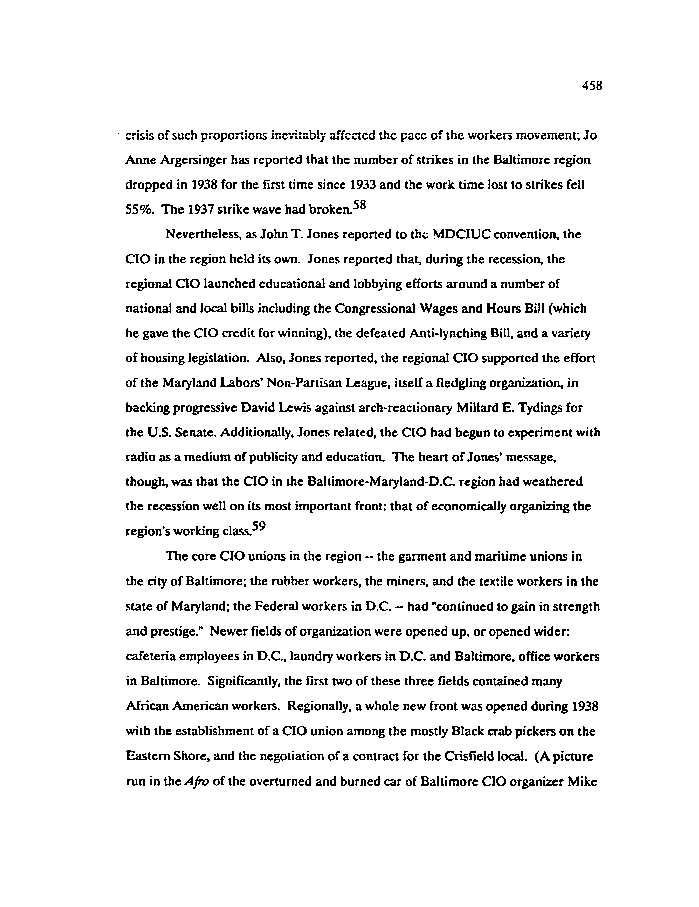|
458
crisis of such proportions inevitably affected the pace of the workers movement; Jo
Anne Argersinger has reported that the number of strikes in the Baltimore region
dropped in 1938 for the first time since 1933 and the work time lost to strikes fell
55%. The 1937 strike wave had broken.58
Nevertheless, as John T. Jones reported to the MDCIUC convention, the
CIO in the region held its own. Jones reported that, during the recession, the
regional CIO launched educational and lobbying efforts around a number of
national and local bills including the Congressional Wages and Hours Bill (which
he gave the CIO credit for winning), the defeated Anti-lynching Bill, and a variety
of housing legislation. Also, Jones reported, the regional CIO supported the effort
of the Maryland Labors' Non-Partisan League, itself a fledgling organization, in
backing progressive David Lewis against arch-reactionary Millard E. Tydings for
the U.S. Senate. Additionally, Jones related, the CIO had begun to experiment with
radio as a medium of publicity and education. The heart of Jones" message,
though, was that the CIO in the Baltimore-Maryland-D.C region had weathered
the recession well on its most important front: that of economically organizing the
region's working class.*^
The core CIO unions in the region - the garment and maritime unions in
the city of Baltimore; the rubber workers, the miners, and the textile workers in the
state of Maryland; the Federal workers in D.C. — had "continued to gain in strength
and prestige." Newer fields of organization were opened up, or opened wider:
cafeteria employees in D.C., laundry workers in D.C. and Baltimore, office workers
in Baltimore. Significantly, the first two of these three fields contained many
African American workers. Regionally, a whole new front was opened during 1938
with the establishment of a CIO union among the mostly Black crab pickers on the
Eastern Shore, and the negotiation of a contract for the Crisfield local. (A picture
run in the Afro of the overturned and burned car of Baltimore CIO organizer Mike
|

